12.12.2022
UAE’s Rashid rover on way to the Moon after historic launch
A SpaceX rocket launched the Arab world's first Moon mission on Sunday
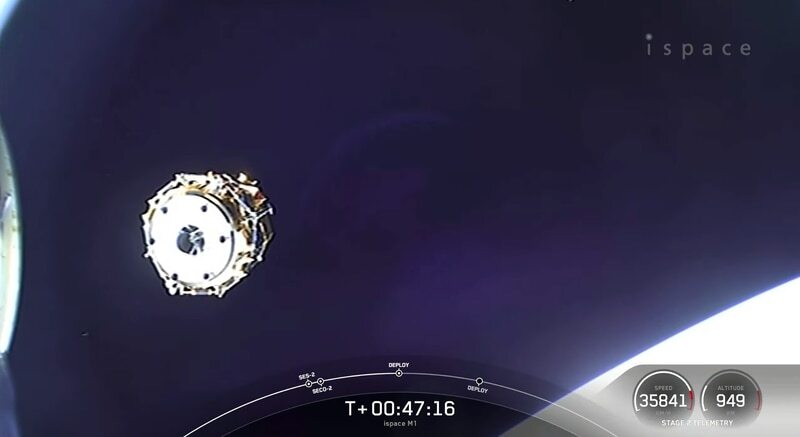

Sheikh Mohammed bin Rashid, Vice President and Ruler of Dubai, Sheikh Hamdan and Sheikh Maktoum witness the historic launch of the Rashid rover from the Mohammed bin Rashid Space Centre. Photo: Dubai Media Office
The UAE launched the Arab world’s first mission to the Moon on Sunday, marking a historic beginning for the country’s long-term lunar exploration programme.
Skies lit up across the launch site in Cape Canaveral, Florida, when a SpaceX Falcon 9 rocket lifted off with 163 tonnes of thrust to deliver the Rashid rover to a lunar transfer orbit in space.
The small rover is now on its way to the Moon aboard the Hakuto-R Mission 1 lander, built by Japanese lunar exploration company ispace, on a journey that is expected to last five months.
Sheikh Mohammed bin Rashid, Vice President and Ruler of Dubai, and Sheikh Hamdan bin Mohammed, Crown Prince of Dubai, were in the control room of the Mohammed bin Rashid Space Centre to watch.
"Reaching the moon is another milestone in the ambitious march of a country and a nation whose aspirations have no limits," Sheikh Mohammed said on Twitter.
"Rashid Rover is part of UAE’s ambitious space programme that started with Mars passing through the Moon and to Venus.
"Passing on knowledge, developing our capabilities, and adding a scientific footprint in human history is or goal."
The rocket blasted off into space at 11.38am UAE time from the Launch Complex 40 pad, a site operated by the US Space Force.
Ispace’s lander separates from the rocket about 35 minutes after lift-off and then begins its solo journey to the Moon.
“That was a very exciting launch. We’re very happy that it went according to plan,” Salem Al Marri, director-general of the Mohammed bin Rashid Space Centre, the organisation behind the rover, told The National.
“SpaceX is a great company and they’re good at what they do. Now, it’s the tough journey all the way to the Moon, but we have confidence in ispace and we hope everything goes well.”
SpaceX’s reusable Falcon 9 booster landed safely back on the company’s drone ship just eight minutes after delivering the lander to space.
Even though the launch was successful, landing on the Moon is challenging, with more than one-third of lunar landing missions failing.
Only the US, former Soviet Union and China have achieved a soft landing on the Moon. Recently, India and Israel had crash landings.
Because the Moon has no atmosphere, landers have to perform complex manoeuvres using propulsion system to be able to land softly, as well as survive debris scattered on the surface.
The National received access to the new mission control centre at the Mohammed bin Rashid Space Centre in Dubai, where engineers will track the lander and rover on their journey to the Moon and during their operations there.
“That five-month journey in relatively deep space with a harsh environment is also something that's difficult, but that can be monitored and you can mitigate the risk,” said Mr Al Marri.
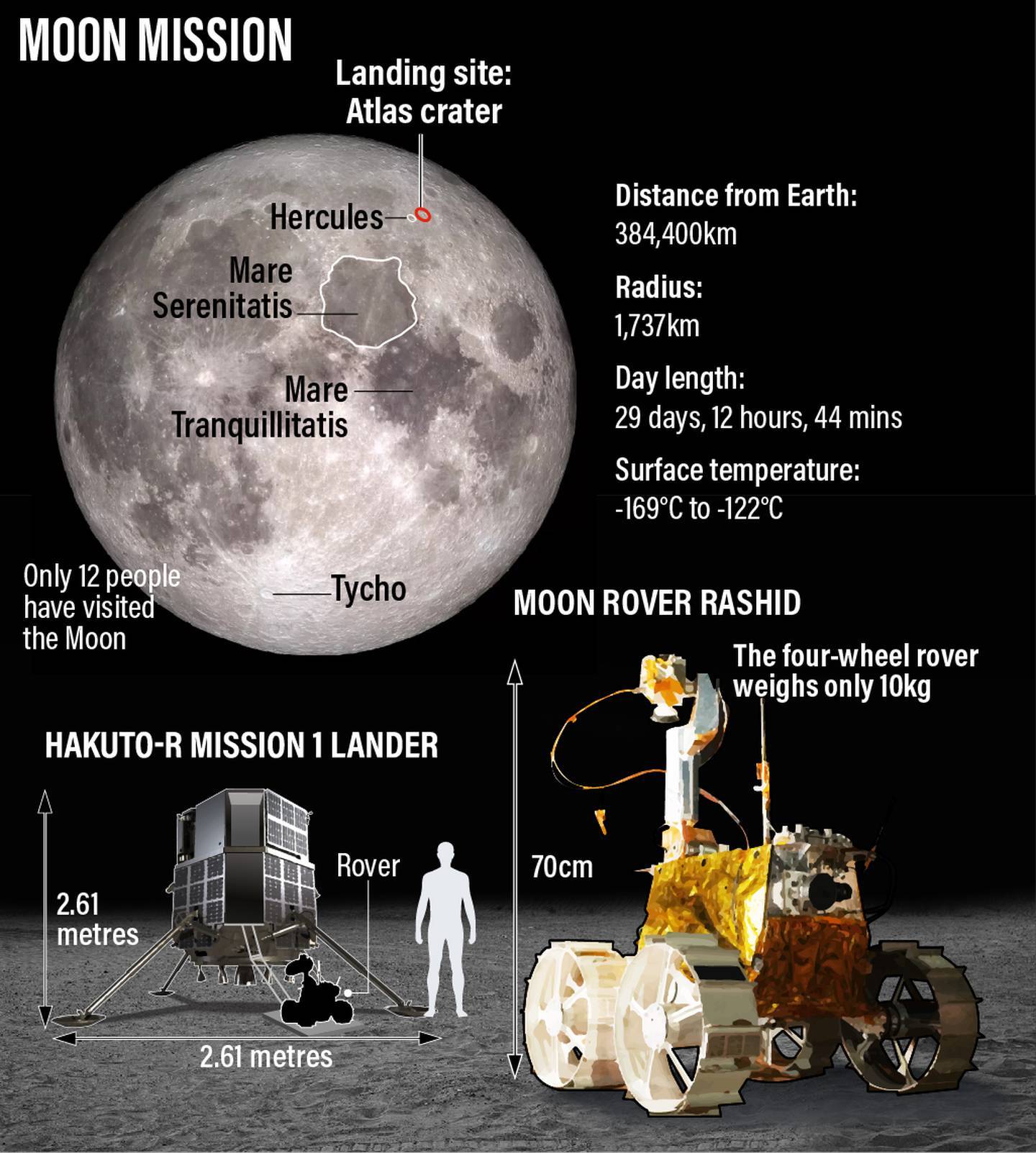
“Landing is going to be key. You've got one shot. It’s very difficult to land on the surface of the Moon and things pretty much will happen autonomously.”
The Hakuto-R Mission 1 lander is taking a longer route to save on fuel and reduce costs and will use a gravity assist from the Sun to get closer to the Moon.
Takeshi Hakamada, founder and chief executive of ispace, told The National that he “felt confident” the mission would be a success.
“I’m very confident on this first mission because our engineers put best effort possible to mature our technology and we integrated external knowledge as well,” he said.
If the company achieves a soft landing, ispace will become the first company to carry out a successful commercial cargo to the Moon, with several government and private payloads on board.
Quelle: The National
----
Update: 6.01.2023
.
Private Japanese lunar lander performs 2nd major maneuver on its way to the moon
Tokyo-based startup ispace's HAKUTO-R lander remains on course to reach the moon in April.

The HAKUTO-R lunar lander by Japanese startup ispace is on its way to Earth's natural satellite after successfully completing its second major deep-space maneuver.
HAKUTO-R, which launched atop a SpaceX Falcon 9 rocket from Cape Canaveral Space Force Station in Florida on Dec. 11, 2022, has already traveled over 770,000 miles (1,24 million kilometers) from Earth, according to a company statement(opens in new tab).
The spacecraft, which could be the first private mission to successfully soft-land on the moon, has completed two "orbital control maneuvers" to date and also sent some awe-inspiring images back to Earth.
The second maneuver took place on Monday (Jan. 2) shortly after midnight Japanese time (10 p.m on Jan. 1 EST) and lasted longer than the first orbital correction maneuver, which was performed on Dec. 15.
The mission, which will reach its farthest distance from Earth (860,000 miles, or 1.4 million km) on Jan. 20, will then perform a third thruster firing to help fine-tune its trajectory in order to enter orbit around the moon.
"Since its launch on Dec. 11, 2022, the lander has maintained stable navigation in accordance with the mission plan," ispace said in the statement. "Once the lander has navigated deep space for one month, it will have achieved Mission 1 Milestone Success 5, at which point an announcement is expected to be made."
HAKUTO-R is scheduled to land on the moon this coming April, after which it will deploy a small rover called Rashid for the United Arab Emirates. That would be a huge milestone, the first-ever successful soft lunar touchdown by a private lander. (In 2019, the Beresheet lunar lander by SpaceIL of Israel crashed during its landing attempt.)
There should be others in short order afterward, however; several other private moon landers are readying for launch in the coming months, including Nova-C by Intuitive Machines and Astrobotic's Peregrine.
Ispace views the current Mission 1 as a test flight designed to hit a set of 10 performance milestones between launch and landing. The company says that each of these milestones was chosen to help validate the performance of its technology to enable the firm to make changes ahead of future missions. The next two ispace lunar flights are scheduled to launch in 2024 and 2025, respectively.
Quelle: SC
----
Update: 18.01.2023
.
ispace Completes 50% of the HAKUTO-R First Lunar Mission Milestones
On January 11, 2023, a month after the launch of the ispace Japanese HAKUTO-R Mission 1, the company announced it had completed 50% of the missions milestones. Onboard the lunar lander are two Canadian payloads.
The first five milestones completed are:
- Completion of launch preparations
- Completion of launch and deployment
- Establishment of a Steady Operation Status
- Completion of the first orbital control maneuver
- Completion of stable deep-space flight operations for one month
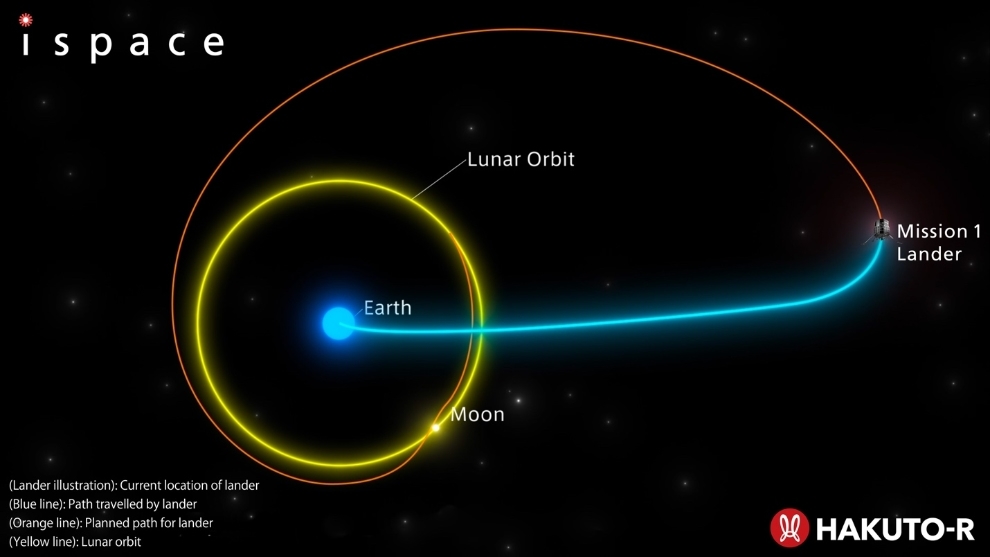
The diagram approximates the position of the M1 lander. Actual position, distances and scale of spacecraft and stellar bodies may differ. Credit: ispace.
In a press release ispace stated that “the HAKUTO-R Mission 1 lander, which was successfully launched by a SpaceX Falcon 9 rocket on Dec. 11, 2022, completed its first orbit control maneuver on Dec. 15, 2022, followed by a second orbital control maneuver on Jan. 2, 2023. The completion of these operations as part of the mission plan, including multiple orbital control maneuvers, over a period of one month is considered highly significant because it increases confidence in future Mission 1 flight operations and provides crucial data that will be incorporated into plans for Mission 2 and Mission 3.”
A further 5 milestones are planned including:
- Completion of all deep space orbital control maneuvers before lunar orbit insertion
- Reaching the lunar gravitational field, lunar orbit
- Completion of all orbit control maneuvers in lunar orbit
- Completion of lunar landing
- Establishment of a steady system state after lunar landing
ispace further stated “as of Jan. 11, 2023, the lander has traveled approximately 1.34 million kilometers from the Earth and is scheduled to be at its farthest point of approximately 1.4 million km from the Earth by Jan. 20, 2023. Once the lander reaches its farthest point from Earth, a third orbital control maneuver may be performed, depending on its navigational status. Since its launch on Dec. 11, 2022, the lander has maintained stable navigation in accordance with the mission plan. During the next stage of navigation, the M1 lander will utilize gravitational forces to complete all deep space control maneuvers and prepare for an orbital insertion. The completion of these maneuvers, currently projected for late March, will signify the achievement of Mission Milestone 6, at which point an announcement is expected to be made. Subsequently, Success 7 of the Mission Milestones, the lunar orbit injection, is scheduled to take place soon thereafter.”
HAKUTO-R is the first commercial mission to attempt to land on the Moon and includes two Canadian payloads, one from Canadensys Aerospace and one from Mission Control Space Services.
The Canadensys Aerospace payload is an AI-enabled operational lunar 360-degree imaging system, including multiple cameras, which was designed to withstand the harsh lunar environment.
The Mission Control Space Services payload is an artificial intelligence-integrated flight computer to classify types of geological features as a rover drives around the lunar surface.
Quelle: spaceQ
----
Update: 22.03.2023
.
Japanese lander enters lunar orbit
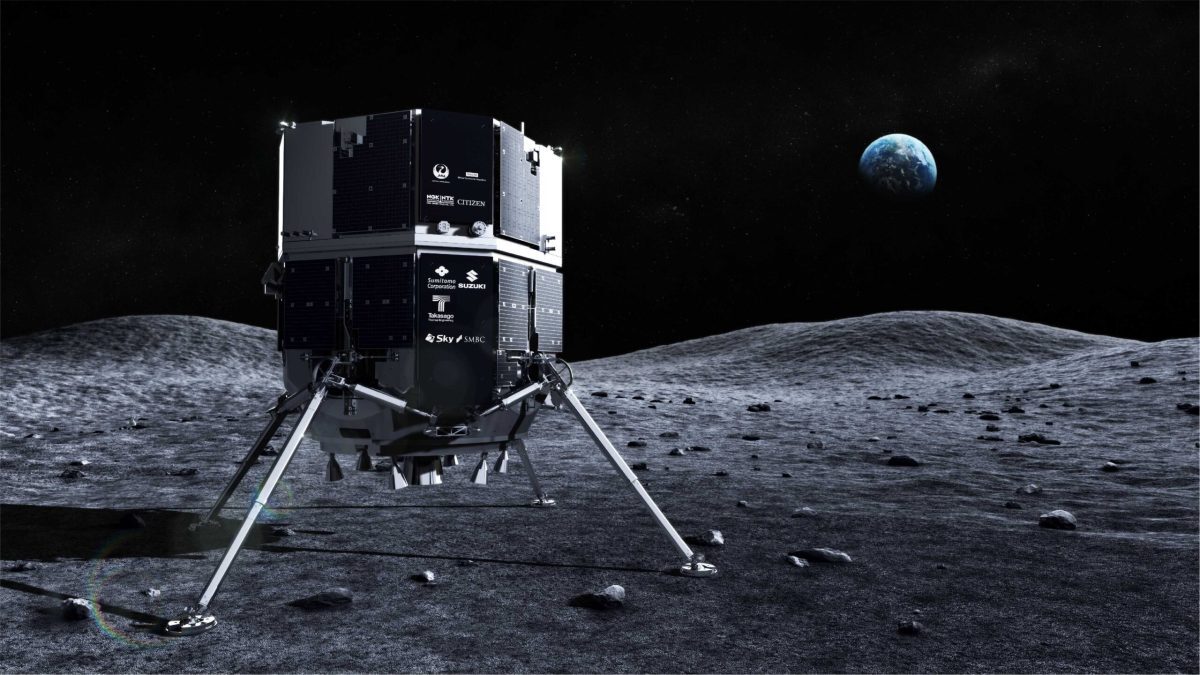
WASHINGTON — A lunar lander developed by Japanese company ispace has entered orbit around the moon, setting up a lunar landing attempt by the end of April.
Tokyo-based ispace said that its HAKUTO-R Mission 1 lander entered orbit at 9:24 p.m. Eastern March 20 after a burn by its main engine lasting several minutes. The company did not disclose the parameters of the orbit but said that the maneuver was a success.
HAKUTO-R Mission 1 launched in December on a SpaceX Falcon 9, going into a low-energy trajectory that took it 1.4 million kilometers from the Earth before swinging back to rendezvous with the moon. The company said in a Feb. 27 update it expected to enter orbit around the moon in the latter half of March but did not announce a specific date for the orbital insertion maneuver.
Entering orbit is the seventh of 10 milestones ispace set for the mission that started with launch preparations. The final three milestones are completing “orbital control maneuvers,” the landing itself and going into a steady state of activities after landing.
Company officials said in February that the mission was going well even as engineers dealt with minor issues, such as higher than expected spacecraft temperatures and an onboard computer that rebooted multiple times. “We have experienced several anomalies, but we have already solved those issues,” said Ryo Ujiie, chief technology officer of ispace.
The spacecraft will attempt a landing in Atlas Crater, located on the edge of Mare Frigoris in the northeastern quadrant of the near side of the moon, around the end of April. The company said March 21 it would announce a specific landing date in the near future. Mission 1 is carrying a set of customer payloads from companies and organizations, such as a small rover called Rashid developed by the United Arab Emirates.
The company is working on a second lander, Mission 2, that is similar in design to the spacecraft now in lunar orbit. It is scheduled to launch in 2024 carrying another set of customer payloads as well as a “micro rover” ispace has developed. Mission 3 will use a larger lander developed by ispace’s U.S. subsidiary in partnership with Draper, which won a NASA Commercial Lunar Payload Services award last July to fly payloads to the lunar farside.
A successful landing would make ispace the first private entity to touch down on the moon and only the fourth organization overall, after the governments of the former Soviet Union, United States and China.
As it prepares to land on the moon, ispace is also preparing to go public. The company announced March 8 it will list its shares on the Tokyo Stock Exchange Growth MarketApril 12. The company will announce pricing for those shares April 3. It had raised nearly $200 million through several private rounds.
Quelle: SN
----
Update: 30.03.2023
.
Private Japanese moon lander sends home stunning image from lunar orbit
The image looks to be the first of many as Hakuto-R prepares for an April landing.
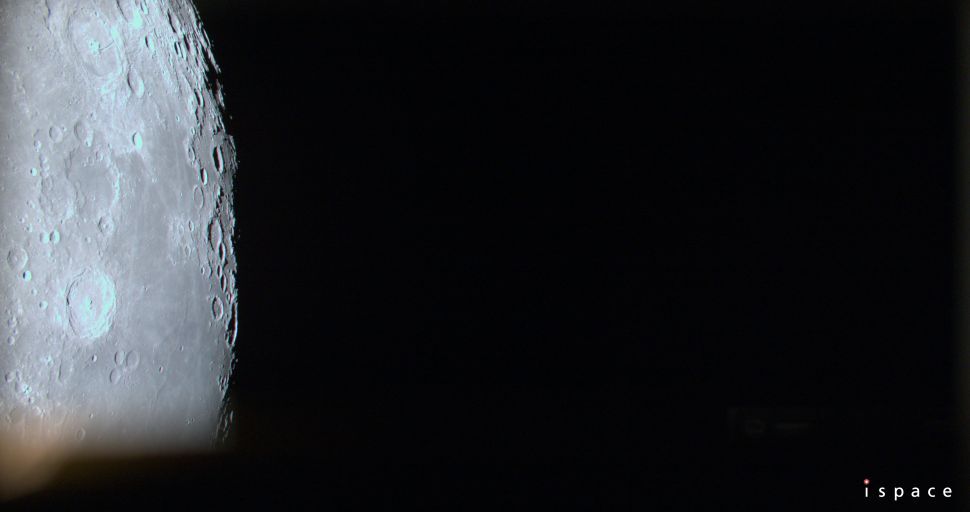
A photograph of the lunar surface taken by the Hakuto-R moon lander built and operated by Japanese company ispace. (Image credit: ispace)
A private Japanese lander has returned a stunning fresh image of the moon.
The Hakuto-R spacecraft snapped the image of a sunlit section of the moon following its arrival in lunar orbit on March 20. The image was taken by a lander-mounted camera and shared by the Twitter account of Japanese company ispace, which developed the spacecraft.
The image shows a range of brightly lit impact craters on the lunar surface against the dark backdrop of space. It also shows partially shadowed craters on the lunar limb, or edge of the moon's visible disc.
Hakuto-R launched on a SpaceX Falcon 9 rocket on Dec. 11, 2022, taking an elongated, highly energy-efficient route to the moon. The spacecraft is expected to make its attempt to land safely on the moon around the end of April, if all proceeds according to plan.
If successful, the lander will make Japan only the fourth country to have a spacecraft soft land on the moon, after the United States, Soviet Union and China.
It would also be a historic first landing on the moon by a privately operated spacecraft. Hakuto-R also carries the tiny Rashid rover for the United Arab Emirates' space agency.
India, with the Chandrayaan 2 lander, and Israeli company SpaceIL, with Beresheet, both failed with lunar landing attempts in 2019.
Ispace promised in its tweet that more stunning views are to come as it prepares for its landing attempt. The company is also working on its second and third missions, targeting launches in 2024 and 2025 respectively.
Quelle: SC
----
Update: 14.04.2023
.
Private Japanese moon lander targeting April 25 for historic touchdown try
Hakuto-R aims to become the first privately operated spacecraft to successfully land on the moon.
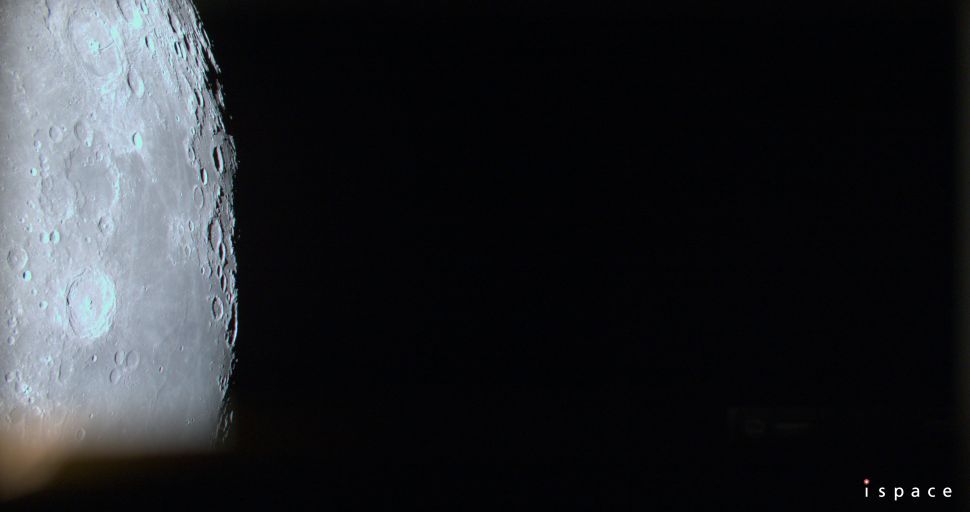
A photograph of the lunar surface taken by the Hakuto-R moon lander built and operated by Japanese company ispace. (Image credit: ispace)
Japan's Hakuto-R spacecraft is preparing to make a historic lunar landing attempt on April 25.
The private Japanese lunar lander is currently in orbit around the moon and targeting a landing for 12:40 p.m. EDT on Tuesday, April 25 (1640 GMT, or 1:40 a.m. JST on April 26).
Alternative landing dates are April 26, May 1 and May 3, according to a statement(opens in new tab) from the spacecraft's developer ispace, which was published on Wednesday (April 12).
The Hakuto-R spacecraft launched in December 2022 atop a SpaceX Falcon 9 rocket. The probe is currently in an elliptical lunar orbit, seeing it approach as close as 62 miles (100 kilometers) to the lunar surface, and heading as far away as 1,430 miles (2,300 km). From there, the spacecraft has already snapped some stunning images.
The landing attempt will see the lander perform a braking burn when at its closest approach, firing its main propulsion system to decelerate from orbit, according to the statement. "Utilizing a series of pre-set commands, the lander will adjust its attitude and reduce velocity in order to make a soft landing on the lunar surface. The process will take approximately one hour."
Additionally, ispace is planning to livestream the landing from mission control in Tokyo, allowing followers to track the landing in near real time.
The primary landing site is Atlas Crater, located at the southeastern outer edge of Mare Frigoris ("Sea of Cold"), according to earlier statements(opens in new tab).
If successful, Hakuto-R will be the first privately operated spacecraft to land safely on the moon. The spacecraft also carries the tiny Rashid rover for the United Arab Emirates' space agency. Success would make Japan only the fourth country to soft-land on the moon, after the United States, Soviet Union and China.
A multi-camera, AI-enabled lunar 360-degree imaging system aboard Hakuto-R developed by Canadensys Aerospace has also recently imaged the moon.
Hakuto-R is just the first step for ispace, which also was listed(opens in new tab) on the Tokyo Stock Exchange Growth Market on April 12.
The company is already working on its second and third moon missions, targeting launches in 2024 and 2025 respectively.
Quelle: SC
----
Update: 17.04.2023
.
The Japanese ispace HAKUTO-R Mission Will Attempt a Moon Landing on April 25
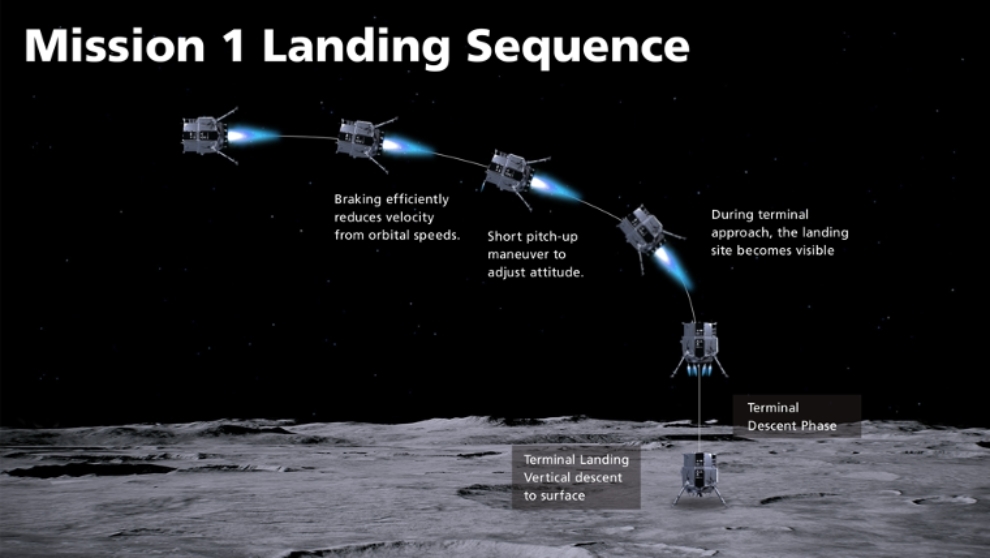
If all goes well, the ispace Japanese lander with Canadian technology onboard will land on the Moon on April 25 sometime after the landing sequence starts at 11:40 am ET (15:40 UTC).
The HAKUTO-R Mission 1 Lunar Lander has met all its milestones to date. And should it safely land on the surface of the Moon it carries with it two Canadian payloads, one from Canadensys Aerospace and another from Mission Control.
Canadensys Aerospace is providing an AI-enabled operational lunar 360-degree imaging system, including multiple cameras. Mission Control will demonstrate an artificial intelligence-integrated flight computer to classify types of geological features as a rover drives around the lunar surface.
In a press release ispace said “at approximately 15:40 on April 25, 2023, (UTC), the lander is scheduled to begin the landing sequence from the 100 km altitude orbit. During the sequence, the lander will perform a braking burn, firing its main propulsion system to decelerate from orbit. Utilizing a series of pre-set commands, the lander will adjust its attitude and reduce velocity in order to make a soft landing on the lunar surface. The process will take approximately one hour.”
ispace further stated that “for Mission 1, ispace has set 10 milestones between launch and landing, and aims to achieve the success criteria established for each of these milestones. Recognizing the possibility of an anomaly during the mission, the results will be weighed and evaluated against the criteria and incorporated into future missions already in development between now and 2025. Mission 2 and Mission 3, which also will contribute to NASA’s Artemis Program, will further improve the maturity of ispace’s technology and business model. Future announcements on progress of milestone achievement are expected to be released once attained.”
The first eight milestones completed are:
- Completion of launch preparations
- Completion of launch and deployment
- Establishment of a Steady Operation Status
- Completion of the first orbital control maneuver
- Completion of stable deep-space flight operations for one month
- Completion of all deep space orbital control maneuvers before lunar orbit insertion
- Reaching the lunar gravitational field, lunar orbit
- Completion of all orbit control maneuvers in lunar orbit
Milestone 9 is: Completion of lunar landing: Complete the landing sequences, verifying key landing abilities for future missions.
Milestone 10 is: Establishment of a steady system state after lunar landing – Establish a steady telecommunication and power supply on the lunar surface after landing to support customer payloads’ surface operations.
Landing on the Moon is not easy. Ask Israel or India, two of the most recent attempts. Israel’s privately funded SpaceIL Beresheet lander crashed in June 2019. Later the same year, India’s Vikram also crashed landed.
Can the HAKUTO-R Mission 1 fare any better? Stay tuned.
Quelle: spaceQ
----
Update: 27.04.2023
.
iSpace: Japanese Moon lander likely to have crashed
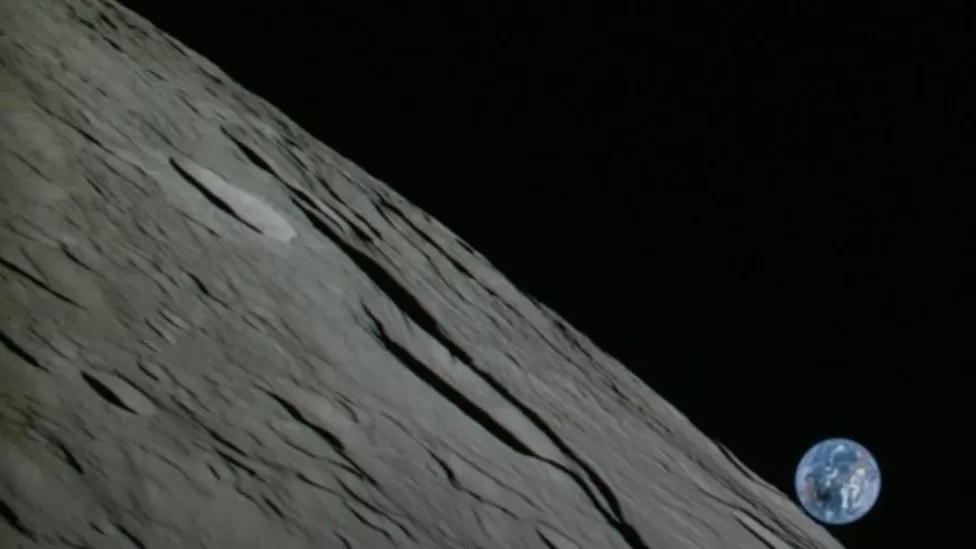
Photos taken from the spacecraft over the weekend
A Japanese company hoping to carry out a rare private Moon landing says it is likely its lunar lander crashed on the surface.
Communication was lost with Hakuto-R moments before it was due to touch down at approximately 16:40 GMT on Tuesday.
Engineers are investigating what happened.
The Tokyo-based iSpace had hoped the lander would release an exploratory rover, as well as a tennis ball-sized robot developed by a toymaker.
The craft was launched by a SpaceX rocket in December, and took five months to reach its destination.
"We have not confirmed communication with the lander," iSpace CEO Takeshi Hakamada said about 25 minutes after the planned landing.
"We have to assume that we could not complete the landing on the lunar surface," he added.
Mr Hakamada later said that despite not expecting to complete the mission, the company had "fully accomplished the significance of this mission, having acquired a great deal of data and experience by being able to execute the landing phase".
The M1 lander appeared set to touch down after coming as close as 295 feet (89 m) from the lunar surface, a live animation showed.
The lander was just over 2m tall and weighed 340kg, relatively small and compact by lunar spacecraft standards. It had been due for an hour-long landing manoeuvre from its orbit, around 100km above the surface, where it was moving at nearly 6,000km/hour.
After reaching the landing site in the Moon's northern hemisphere, the Hakuto-R was to deploy two payloads to analyse the lunar soil, its geology and atmosphere. One of them was made by the toy company TOMY, which created the Transformers.
The United States, Russia and China are the only countries to have managed to put a robot on the lunar surface, all through government-sponsored programmes.
In 2019, Israel's Beresheet mission became the first attempt by a private company to land on the Moon. Its spacecraft managed to orbit the Moon but was lost during the landing attempt. An Indian attempt to land a probe on the Moon failed later in the same year.
The primary aim of the Japanese mission was to assess the viability of commercial launches to the lunar surface. It was the first test by iSpace of what they hope will be a series of commercial landers over the next few years, each more ambitious than the previous.
The company's vision is to provide commercial services for a sustained human presence on the lunar surface, such as sending up equipment for mining and producing rocket fuel.
According to Dr Adam Baker, who is director of a space consultancy firm not involved with the project, Rocket Engineering, a successful landing would have represented a "step change" in commercial involvement in space exploration.
"If it is affordable and can be repeated, it opens up the door for anyone who is prepared to pay the price to land something on the surface of the Moon," he told the BBC.
Watch: a demonstration of the mini-Moon robot designed to roll across the lunar surface
ispace Announces Results of the "HAKUTO-R" Mission 1 Lunar Landing
Landing Anomaly Identified for Future Mission Improvements
TOKYO—May 26, 2023—ispace, inc., (ispace) a global lunar exploration company, announced today that it has reviewed and completed the analysis of the flight data from its HAKUTO-R Mission 1 landing sequence on April 26, 2023. The flight data was obtained by operations specialists at ispace’s Mission Control Center in Nihonbashi, Tokyo.
The analysis reveals that the lander fully completed the entire planned deceleration process, slowing to the target speed of less than 1 m/s in a vertical position at an altitude of approximately 5 kms above the lunar surface. Although the lander did not complete a soft landing, the cause has been identified and improvements are being incorporated into Mission 2 and Mission 3.
On April 26, 2023, at 00:40 Japan Standard Time, the lander began the descent sequence from an altitude of approximately 100 kms above the lunar surface. At the end of the planned landing sequence, it approached the lunar surface at a speed of less than 1 m/s. The operation was confirmed to have been in accordance with expectations until about 1:43 a.m., which was the scheduled landing time.
During the period of descent, an unexpected behavior occurred with the lander’s altitude measurement. While the lander estimated its own altitude to be zero, or on the lunar surface, it was later determined to be at an altitude of approximately 5 kms above the lunar surface. After reaching the scheduled landing time, the lander continued to descend at a low speed until the propulsion system ran out of fuel. At that time, the controlled descent of the lander ceased, and it is believed to have free-fallen to the Moon’s surface.
The most likely reason for the lander’s incorrect altitude estimation was that the software did not perform as expected. Based on the review of the flight data, it was observed that, as the lander was navigating to the planned landing site, the altitude measured by the onboard sensors rose sharply when it passed over a large cliff approximately 3 kms in elevation on the lunar surface, which was determined to be the rim of a crater. According to the analysis of the flight data, a larger-than-expected discrepancy occurred between the measured altitude value and the estimated altitude value set in advance. The onboard software determined in error that the cause of this discrepancy was an abnormal value reported by the sensor, and thereafter the altitude data measured by the sensor was intercepted. This filter function, designed to reject an altitude measurement having a large gap from the lander’s estimation, was included as a robust measure to maintain stable operation of the lander in the event of a hardware issue including an incorrect altitude measurement by the sensor.
One major contributing factor to this design issue was a decision to modify the landing site after critical design review completed in February 2021. This modification influenced the verification and validation plan despite numerous landing simulations carried out before the landing. ispace as the mission operator maintained overall program management responsibility and took into account the modifications in its overall analysis related to completing a successful mission. It was determined that prior simulations of the landing sequence did not adequately incorporate the lunar environment on the navigation route resulting in the software misjudging the lander’s altitude on final approach.
The analysis reveals that the cause of the lander’s failure to make a soft landing was due to the software, especially in the phase just prior to landing. This information will be incorporated into software design, as well as upgrades and expansion of the scope of preparatory simulations of the landing sequence for our future missions, including Mission 2 and Mission 3, to improve the accuracy of landing sequences.
Based on the fact that communications will not be reestablished with the lander, it has been concluded that the completion of the Mission 1 Milestones Success 9 (completion of the lunar landing) and Success 10 (establishment of stable conditions after landing), could not be achieved, and customer payloads could not be operated after the landing.
“Mission 1 demonstrated a great deal of technical reliability, as our lander reached the lunar surface just prior to landing. Now, we have been able to identify the issue during the landing and have a very clear picture of how to improve our future missions. While it is unfortunate that we were not able to fully meet the expectations of all our stakeholders, including our customers, all of us at ispace are proud of what we accomplished in Mission 1 and are very positive about what we can accomplish,” said Takeshi Hakamada, Founder and CEO of ispace. “We have already begun work on Mission 2 and Mission 3. We are prepared to face the challenges and make every effort to improve. We will ensure that the valuable knowledge gained from Mission 1 will lead us to the next stage of evolution. We believe that this is our commitment and our duty to all our stakeholders. ‘Never Quit the Lunar Quest’ In this spirit, we will continue to move forward.”
During Mission 1 the HAKUTO-R lunar lander completed Success 1 through Success 8 of the Mission 1 milestones. The lander was able to withstand the harsh mechanical environment of both the launch and deployment phases without sustaining damage to any of its elements. It then withstood a lengthy deep space cruise demonstrating its flight readiness. In addition, the lander performed well through multiple orbit control maneuvers, indicating that it can be operated in Mission 2 using the same Series 1 model as in Mission 1, without the need for any major modifications. The thermal design, communications, and electric power demonstrated functionality as planned, and based on analysis of the flight data, a more efficient operation can be achieved in Mission 2. At this time, there are no changes to the launch schedule for Mission 2 (scheduled for 2024) and Mission 3 (scheduled for 2025).
Mission 1 Milestones
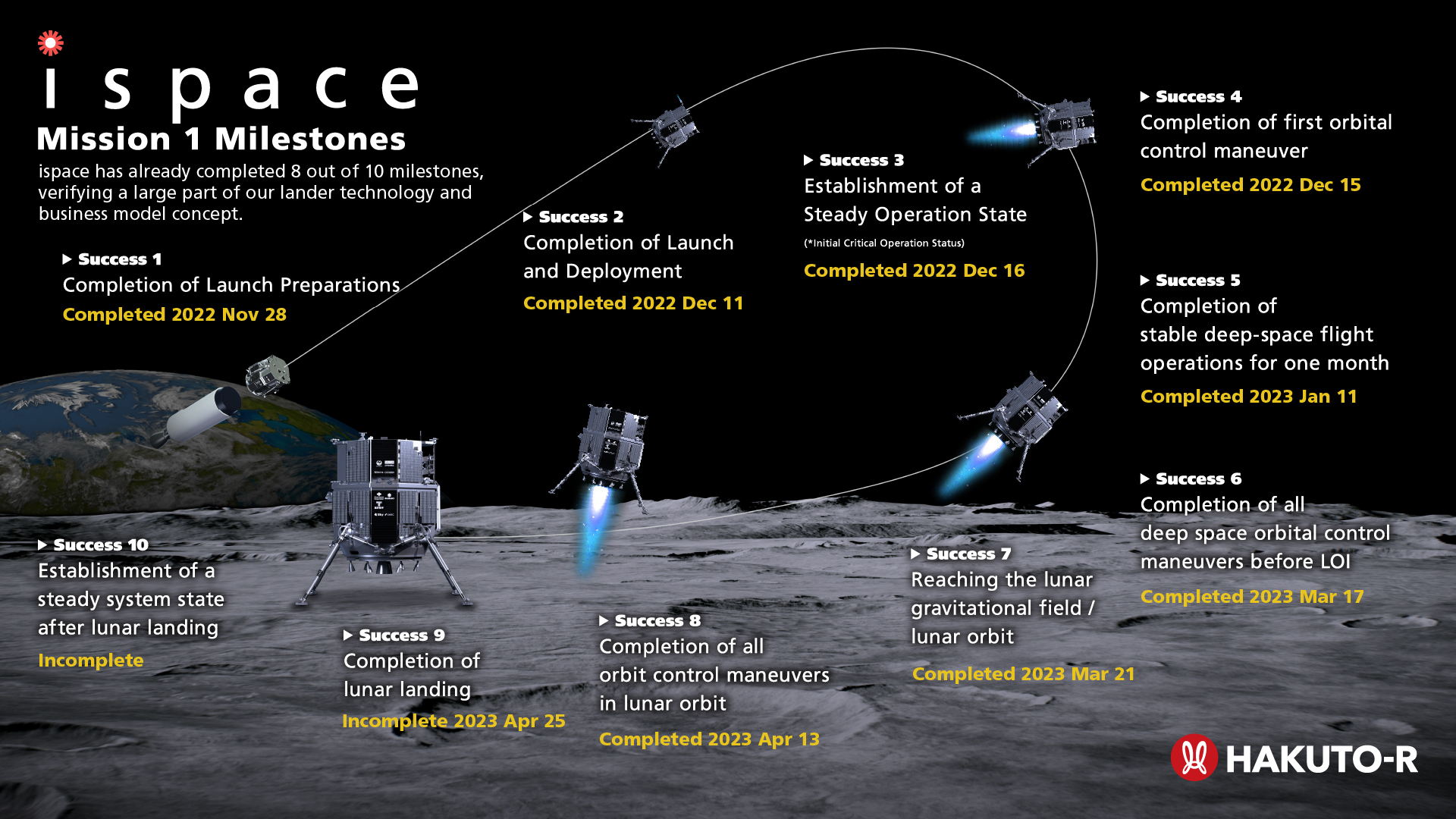
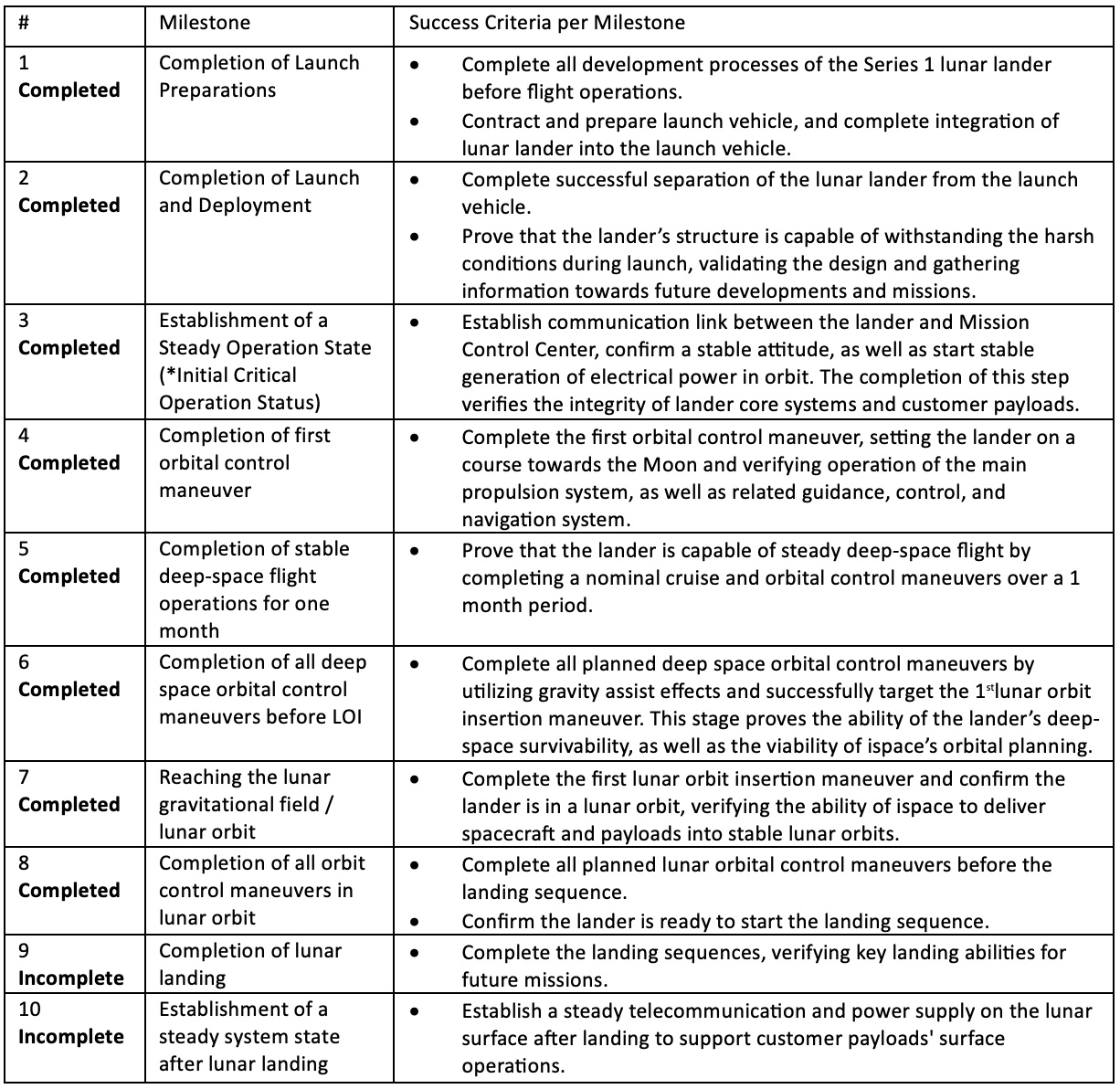
About ispace, inc.
ispace, a global lunar resource development company with the vision, “Expand our Planet. Expand our Future.”, specializes in designing and building lunar landers and rovers. ispace aims to extend the sphere of human life into space and create a sustainable world by providing high-frequency, low-cost transportation services to the Moon.
The company has offices in Japan, Luxembourg, and the United States with more than 200 employees worldwide. ispace technologies U.S., inc. is part of a team led by Draper, which was awarded a NASA Commercial Lunar Payload Services (CLPS) Program contract to land on the far side of the Moon by 2025 (as of September 2022). Both ispace, and ispace EUROPE S.A. (ispace EU) were awarded contracts to collect and transfer ownership of lunar regolith to NASA, and ispace EU was selected by ESA to be part of the Science Team for PROSPECT, a program which seeks to extract water on the Moon.
Established in 2010, ispace operated “HAKUTO” which was one of five finalist teams in the Google Lunar XPRIZE race. The company’s first mission, part of its HAKUTO-R lunar exploration program, launched on Dec. 11, 2022, from the United States on a SpaceX Falcon 9 rocket and completed 8 of 10 mission milestones. Subsequent missions are in development with launches expected in 2024 and 2025. ispace has also launched a lunar data business concept to support new customers as a gateway to conduct business on the Moon.
Quelle: ispace
